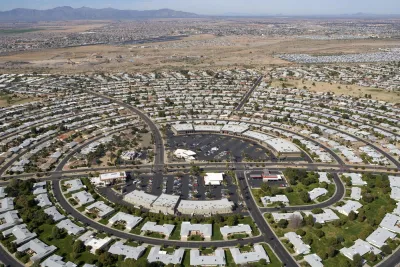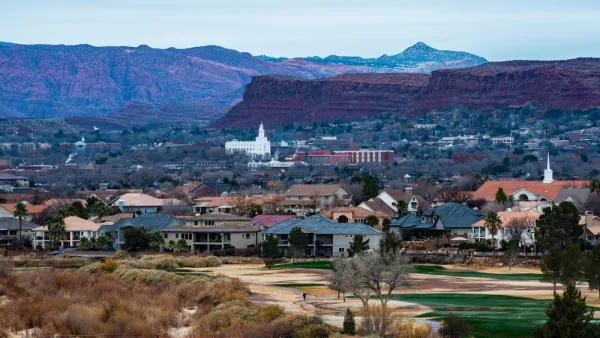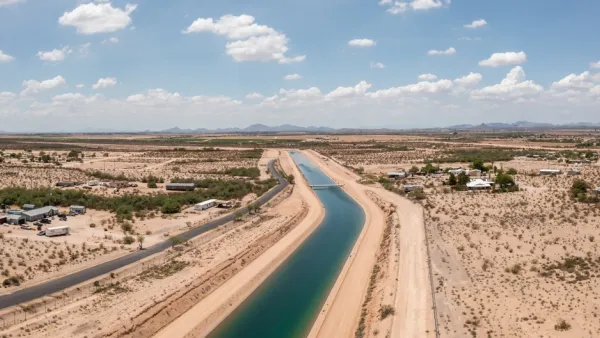New communities are popping up across Arizona’s desert, evading water consumption restrictions and straining the state’s groundwater supplies.

Reporting for KJZZ, Katherine Davis-Young examines Arizona’s increasingly urgent water crisis. As Davis-Young explains, “Maricopa County’s population has more than doubled over the past 30 years, making it one of the fastest growing regions in the country. But meanwhile, Arizona’s water supply has become more and more depleted.”
The 1980 Groundwater Management Act called on the state to use underground aquifers primarily as a back-up and employ tactics to replenish groundwater supplies, but Kathleen Ferris, a researcher from Arizona State University, says that has not been happening.
“In most areas of central Arizona, a developer can’t build a new home without first proving that there’s enough water to last that property 100 years. But there are loopholes for larger lots in rural areas, like many homes in Rio Verde Foothills.” And while some cities like Phoenix have actually reduced their water use even as their population grew, rapid development happening in undeveloped desert areas largely counts on groundwater. “Back in 1980, legislators set a target to achieve safe yield of groundwater by 2025. So Ferris thinks the time for elected leaders to start answering questions about growth and sustainability is now.”
More Planetizen coverage of the water crisis in the American West:
FULL STORY: Arizona's water supply is shrinking, but its population is growing. Is it sustainable?

Analysis: Cybertruck Fatality Rate Far Exceeds That of Ford Pinto
The Tesla Cybertruck was recalled seven times last year.

National Parks Layoffs Will Cause Communities to Lose Billions
Thousands of essential park workers were laid off this week, just before the busy spring break season.

Retro-silient?: America’s First “Eco-burb,” The Woodlands Turns 50
A master-planned community north of Houston offers lessons on green infrastructure and resilient design, but falls short of its founder’s lofty affordability and walkability goals.

Test News Post 1
This is a summary

Analysis: Cybertruck Fatality Rate Far Exceeds That of Ford Pinto
The Tesla Cybertruck was recalled seven times last year.

Test News Headline 46
Test for the image on the front page.
Urban Design for Planners 1: Software Tools
This six-course series explores essential urban design concepts using open source software and equips planners with the tools they need to participate fully in the urban design process.
Planning for Universal Design
Learn the tools for implementing Universal Design in planning regulations.
EMC Planning Group, Inc.
Planetizen
Planetizen
Mpact (formerly Rail~Volution)
Great Falls Development Authority, Inc.
HUDs Office of Policy Development and Research
NYU Wagner Graduate School of Public Service




























